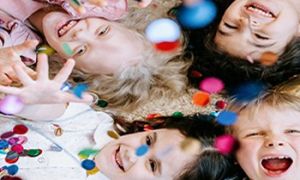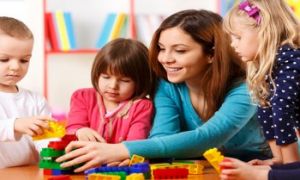As an early childhood educator, you are entrusted with shaping children for the future. Creating a multicultural environment in the learning space is one of the most effective ways of helping children prepare for this world as they learn inclusive ways of thinking, working and being. The following article provides ideas and strategies for creating a multicultural environment in an early childhood setting.
Lead By Example
A good place to start is by modelling warm, inclusive behaviour yourself. Let your young learners see you welcoming and interacting with people and families of diverse communities and backgrounds. Make it a point to celebrate festivals and ‘food fiestas’ of different cultures or host a culture month when children can share aspects of their cultural background. Besides making learners of different backgrounds feel included, this will lend even further variety and colour to classroom lessons. Plan for a Learn more about the backgrounds of your students and familiarise yourself with practices and objects that have specific symbolic meanings for certain groups so that there is minimum scope for misunderstandings. Also, examine your beliefs for perhaps hidden biases; for example, it is common to judge certain parenting styles, especially when they are mediated through racial and ethnic differences.
Address Queries
However, welcoming children from different groups is only the beginning. As children from varied backgrounds come together and mingle, they are sure to ask questions about why a mate gets ‘weird’ tasting snacks or why another looks or talks ‘funny’. Instead of getting embarrassed, ignoring the question or changing the topic, acknowledge the speaker’s confusion. Listen to them respectfully and use age-appropriate language to explain why people may look, talk and eat differently but how we are part of one big family.
Widen Representation
Stories, songs and pictures which represent just one racial or social context tend to make other groups invisible. In order to widen representation and nurture multiculturalism you can:
- select stories, songs, poems and rhymes from diverse cultural and ethnic contexts.
- plan assignments that encourage sharing of family stories and traditions like creating a family tree or colouring creation stories.
- ensure access to toys, books, dolls, wall stickers, songs and TV programs which have characters of different skin colour and ethnic features.
- invite guests and motivational speakers from diverse communities to give inspirational talks about other cultures and countries.
Counter Stereotypes
While you may be doing your best to create a welcoming classroom environment, bear in mind that children spend a larger part of their lives outside. Here they may be witnessing biases in social or family interactions which in turn lead to stereotyping and discrimination. One of the ways you can counter this in your classroom is to consciously offer positive models. For example, when choosing narratives, show people of colour in leadership positions or non-white fathers performing caregiving roles at home.
Reinforce rules
Part of the process of creating a multicultural classroom environment also involves setting some ground rules about mutually respectful behaviour. So at the start of the school and then at regular intervals, make it clear that hurting someone on the basis of appearance is unacceptable and that though it is nice to feel proud of one’s own culture and community, that should not make them put others down.
Further Reading
Celebrating Multiculturalism in Childcare - The following article provides information on Celebrating Multiculturalism with Children, How to Celebrate Multiculturalism, How to Celebrate Multiculturalism and more.
Multicultural Songs For Children - It's our duty to make children aware and one of the many ways we can do this is through multicultural songs. The following are multicultural songs that can be included in the Curriculum.
Yearly Calendar of Cultural Celebrations - This yearly calendar has a variety of monthly cultural and community celebrations which can be acknowledged within the program and adapted to suit the needs of the children and their families within the service.
Multicultural Printables - A variety of free multicultural printables that can be used for children's learning.
Reference:
Ways To Implement A Real Multicultural Education, The Advocate


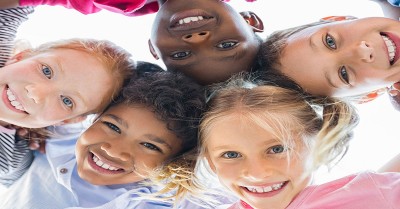
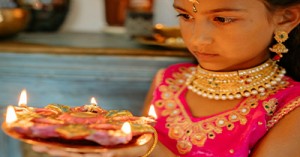


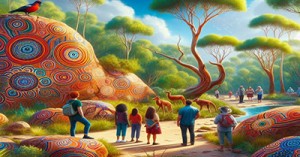
 As an Educator in Australia, your pay rate falls under the Children’s Services Award 2010. This award states the minimum amount that an employer can
As an Educator in Australia, your pay rate falls under the Children’s Services Award 2010. This award states the minimum amount that an employer can When working as a qualified Early Childhood Teacher (with a university degree) within a service, your rate of pay will come from the Educational Services
When working as a qualified Early Childhood Teacher (with a university degree) within a service, your rate of pay will come from the Educational Services When working as a Diploma Qualified Educator your pay rate is from the Children's Services Award 2010. This Award states your minimum rate of pay
When working as a Diploma Qualified Educator your pay rate is from the Children's Services Award 2010. This Award states your minimum rate of pay When working as a Cert 3 Qualified Educator, your pay rate is from the Children's Services Award 2010. This Award states your minimum rate of
When working as a Cert 3 Qualified Educator, your pay rate is from the Children's Services Award 2010. This Award states your minimum rate of Educational Leaders play a crucial role in their early childhood service by ensuring that the educational program aligns with best practices and supports the holistic
Educational Leaders play a crucial role in their early childhood service by ensuring that the educational program aligns with best practices and supports the holistic In early childhood education and care, ratios are more than a technicality—they are a frontline safeguard. Every child deserves responsive supervision, emotional connection, and developmental
In early childhood education and care, ratios are more than a technicality—they are a frontline safeguard. Every child deserves responsive supervision, emotional connection, and developmental With the new national child safety reforms kicking in on 1 September 2025, early childhood services like yours have a real opportunity to lead the
With the new national child safety reforms kicking in on 1 September 2025, early childhood services like yours have a real opportunity to lead the Here’s a comprehensive Mobile Phone and Smart Watch Policy tailored for early childhood education and care (ECEC) services in Australia, aligned with the latest 2025
Here’s a comprehensive Mobile Phone and Smart Watch Policy tailored for early childhood education and care (ECEC) services in Australia, aligned with the latest 2025 The Sea of Fish Challenge is a national initiative that invites children, educators, families, and communities to create and display fish artworks as a symbol
The Sea of Fish Challenge is a national initiative that invites children, educators, families, and communities to create and display fish artworks as a symbol Across the early childhood education and care sector, educators are sounding the alarm: current staffing ratios are insufficient to deliver safe, meaningful, and developmentally appropriate
Across the early childhood education and care sector, educators are sounding the alarm: current staffing ratios are insufficient to deliver safe, meaningful, and developmentally appropriate